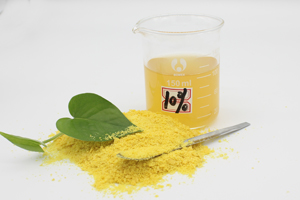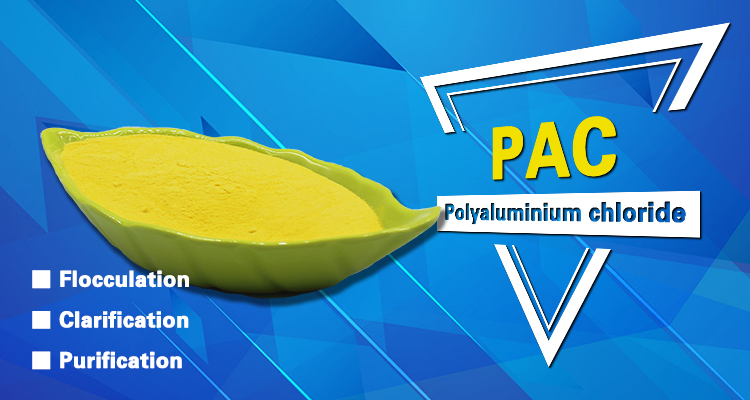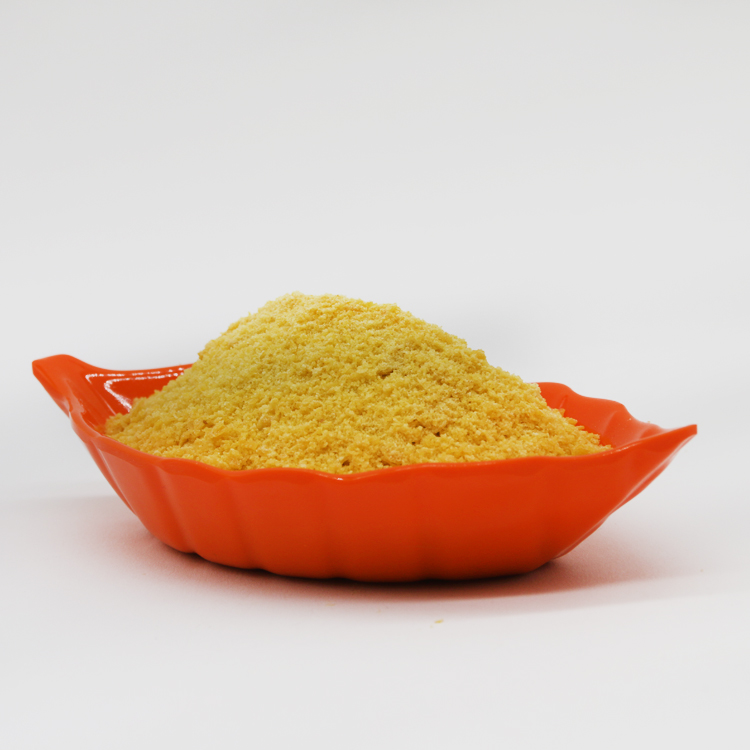
With the development of industry, the discharge of industrial wastewater and sewage is increasing day by day, and the pollution caused by it has seriously threatened people’s health. Oily wastewater is a common type of wastewater. Oily wastewater mainly comes from oil refinery wastewater, oilfield wastewater, and wastewater from mechanical processing industries, and the water quality of oily wastewater is deteriorating with the increase in oilfield extraction and the depth of crude oil processing in my country. Reasonable treatment and utilization of oily wastewater can not only protect the environment, but also recover crude oil and improve the recycling rate of water. The most commonly used and most effective method for oily wastewater treatment is chemical method, that is, adding coagulant to water for coagulation treatment. Inorganic polymer coagulants are widely used in the treatment of industrial wastewater, domestic sewage and drinking water because of their excellent performance and cheap price.
At present, oily wastewater is generally treated by “oil separation and air flotation, coagulation sedimentation and aeration biochemical method”. Among them, the coagulation process, as the key link to remove emulsified oil and suspended solids in water, plays an extremely important role in the normal operation of the entire wastewater treatment process, especially the subsequent biochemical treatment process. It determines the operating conditions of the subsequent process, and ultimately Water quality and costs. Polymer inorganic coagulant is an effective agent in this process.
APPLICATION:
Polyaluminum chloride is a new type of inorganic polymer coagulant. It is the most widely used variety with mature industrial production technology. It has become the mainstream product in the polyaluminum flocculant market. The earliest production and application was Japan. In the late 1960s, it was officially put into industrial production and application. my country has also started production and application in the early 1970s. The application range of basic aluminum chloride is becoming wider and wider, and it can be used for water purification, industrial wastewater, domestic sewage, sludge, etc. It is currently the most widely used coagulant in domestic water supply and industrial water supply treatment. It can also be used in papermaking glue, refractory material binder, textile industry mordant, and in medicine, foundry, machinery, leather, cosmetics, etc. Because basic aluminum chloride has the advantages of less dosage, simple process, convenient operation, high purification efficiency, and wide source of raw materials, it has developed rapidly at home and abroad in the past 20 years.
This product is a cationic inorganic polymer coagulant, which can provide multi-nuclear complex ions when put into water, and will continue to be hydrolyzed and polycondensed until finally producing aluminum hydroxide. Therefore, after the polyaluminum chloride is hydrolyzed, it can provide high-priced polymer ions, the flocs form quickly, the particles are large and heavy, the sedimentation performance is good, and the flocculation effect is better than that of general aluminum salts such as aluminum sulfate. The suitable pH value range is wider than that of traditional aluminum salts (pH value is 5-9), and the pH value and alkalinity of the treated water drop less. When the water temperature is low, it can still maintain a stable flocculation effect, and its alkalization degree is higher than other aluminum salts and iron salts, so the corrosion effect of the liquid medicine on the equipment is small. At the same time, it can also be used to remove iron, manganese, chromium, lead and other heavy metals contained in water, as well as fluoride and oil in water, so it can be used to treat various industrial wastewater. The effective dosage of the product is 20-50 mg/L. Liquid products can be directly metered and added. Solid products need to be made into a 10% to 15% solution in the dissolution tank first, and then metered and added according to the required concentration. The product is highly corrosive, and the feeding equipment needs to be treated with anticorrosion. Need to be equipped with labor protection facilities.
When coagulation is used to treat petrochemical wastewater, polyaluminum chloride has better flocculation performance than traditional flocculants such as aluminum sulfate or even polyferric, especially high-efficiency polyaluminium. When the turbidity of the effluent reaches the same level, its dosage Only 1/5 of poly iron. This produces less sludge, which is beneficial to subsequent treatment, and has a high turbidity removal rate, which has little effect on the pH value of raw water, and can be used as a flocculant for petrochemical sewage reuse treatment. Zuo Ju et al. used polyaluminum chloride in the treatment of industrial film silver-containing wastewater, and studied the factors that affect the effect of treatment factors such as the amount of PAC, the pH value of the solution, the temperature and the alkalinity of PAC. The results show that under appropriate conditions, PAC has a good coagulation effect on metallic silver in film industry wastewater, and the silver concentration in the treated wastewater is generally 0.003-0.005mg/L, which meets the national discharge standard.
The paper industry has a large amount of wastewater discharge, and the mid-stage water accounts for a large proportion, and the black liquor of many paper-making enterprises is also mixed into the mid-stage water for treatment after pretreatment (anaerobic, strong acid treatment, cellulose separation, neutralization, etc.). At present, the easiest way to treat the middle section of water is chemical coagulation. The coagulant used is single-agent polyaluminum chloride or double-agent polyaluminum chloride-polyacrylamide. Although the treatment speed is fast and the effect is good with the use of double agents, it is troublesome to operate in actual production, especially when the water quality is unstable.
Polyaluminum chloride has strong adaptability to water treatment, especially for high turbidity water treatment. For example, in urban and industrial water supply treatment, it is suitable for any water source water quality treatment and its circulation purification treatment process, especially for Treatment of various types of raw water with serious micro-pollution, pretreatment of pure water, and water circulation and purification treatment of thermal power plants. When the water temperature is low, the coagulation and turbidity removal efficiency of traditional coagulants such as aluminum sulfate will be significantly reduced and may cause deterioration of effluent water quality. The use of PAC, whether it is low temperature or low turbidity water, can obtain better coagulation and turbidity removal effect, and can also be used to remove manganese, iron, chromium, lead and other medium metals contained in water, as well as fluoride and oil in water, etc. .
In addition, when polyaluminum chloride is used, there will be problems of uneven mixing, which can be diluted before adding.
Polyaluminum chloride can also be combined with weak cationic polyacrylamide, aluminum sulfate or ferric chloride for sludge conditioning.
75% PAC was selected for the middle stage water treatment of a paper mill. Through continuous observation, it was found that PAC salinity, PAC dosage, and coagulation temperature all have an impact on the treatment effect of the paper mill middle stage wastewater, but the salinity degree has the greatest impact. When the temperature is 25°C and the dosage of PAC is 0.6g/L, the water treated with PAC with a salinity of 75% can meet the discharge standard. Temperature also has an impact on the treatment effect, and the optimal dosage of PAC should be selected according to the change of seasonal temperature to achieve the best treatment effect.


